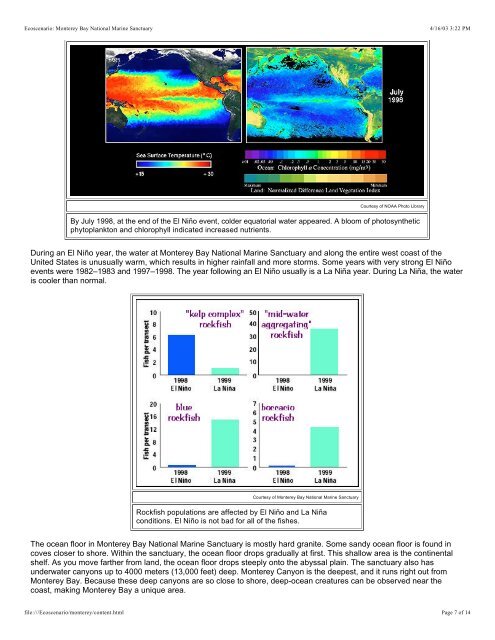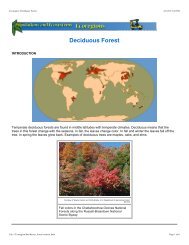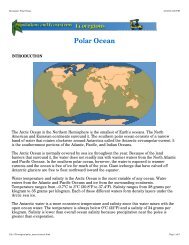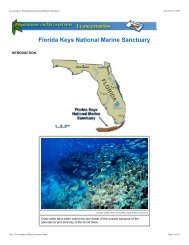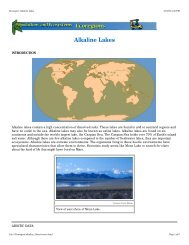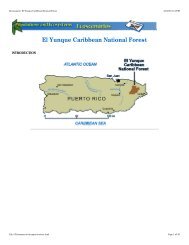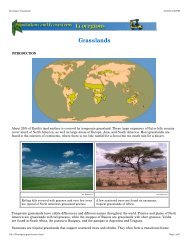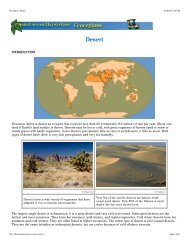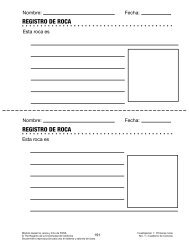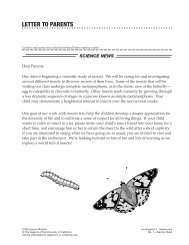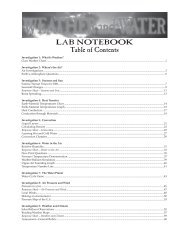Ecoscenarios Combined - FOSSweb
Ecoscenarios Combined - FOSSweb
Ecoscenarios Combined - FOSSweb
Create successful ePaper yourself
Turn your PDF publications into a flip-book with our unique Google optimized e-Paper software.
Ecoscenario: Monterey Bay National Marine Sanctuary<br />
4/16/03 3:22 PM<br />
Courtesy of NOAA Photo Library<br />
By July 1998, at the end of the El Niño event, colder equatorial water appeared. A bloom of photosynthetic<br />
phytoplankton and chlorophyll indicated increased nutrients.<br />
During an El Niño year, the water at Monterey Bay National Marine Sanctuary and along the entire west coast of the<br />
United States is unusually warm, which results in higher rainfall and more storms. Some years with very strong El Niño<br />
events were 1982–1983 and 1997–1998. The year following an El Niño usually is a La Niña year. During La Niña, the water<br />
is cooler than normal.<br />
Courtesy of Monterey Bay National Marine Sanctuary<br />
Rockfish populations are affected by El Niño and La Niña<br />
conditions. El Niño is not bad for all of the fishes.<br />
The ocean floor in Monterey Bay National Marine Sanctuary is mostly hard granite. Some sandy ocean floor is found in<br />
coves closer to shore. Within the sanctuary, the ocean floor drops gradually at first. This shallow area is the continental<br />
shelf. As you move farther from land, the ocean floor drops steeply onto the abyssal plain. The sanctuary also has<br />
underwater canyons up to 4000 meters (13,000 feet) deep. Monterey Canyon is the deepest, and it runs right out from<br />
Monterey Bay. Because these deep canyons are so close to shore, deep-ocean creatures can be observed near the<br />
coast, making Monterey Bay a unique area.<br />
file:///Ecoscenario/monterey/content.html<br />
Page 7 of 14


